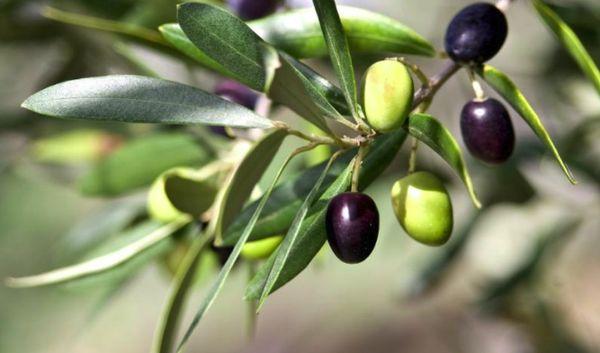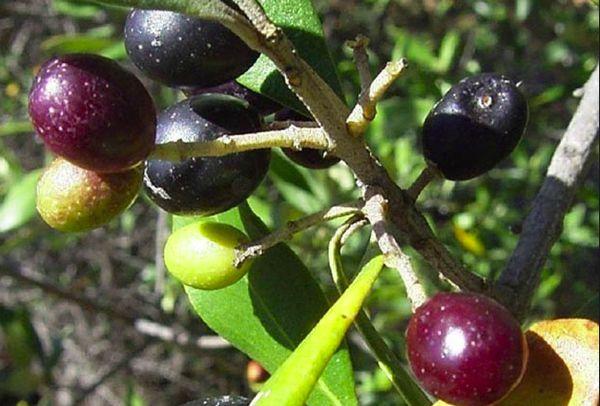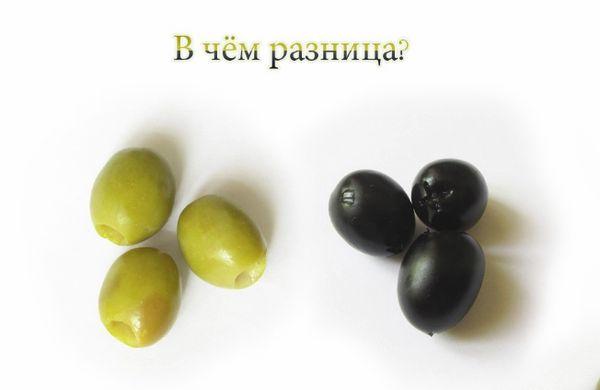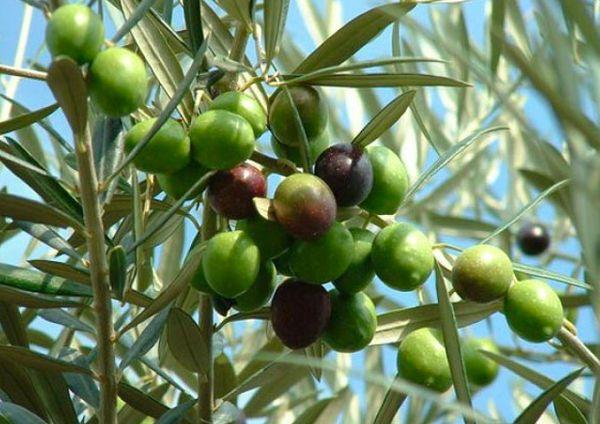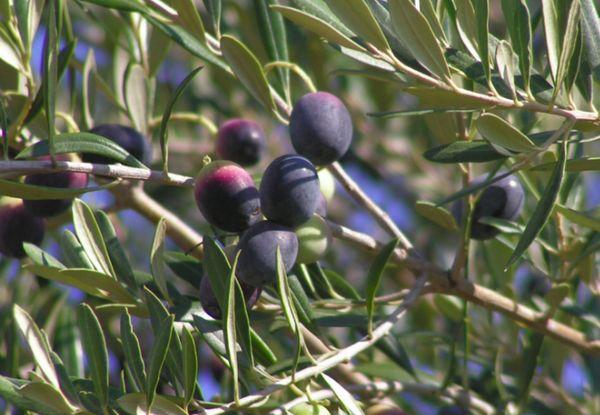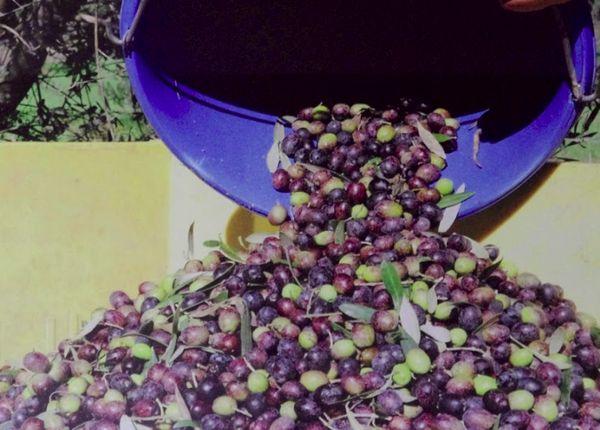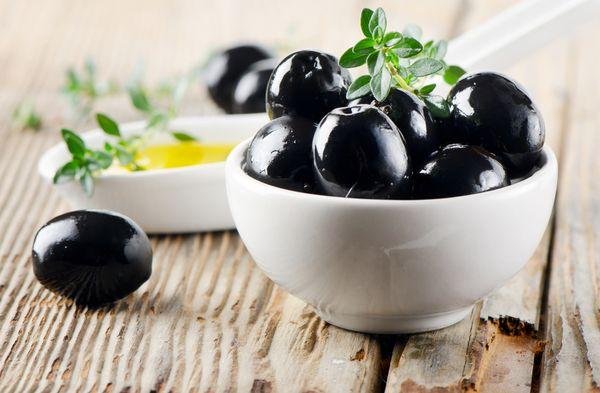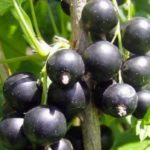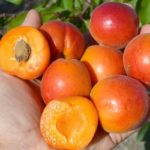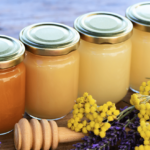There is a variety of olives of various varieties on store shelves. They differ in color and size, type of packaging, and country of origin. The common feature is its popularity as a snack on the holiday table due to its spicy taste. Olive oil, a tasty and healthy product, is no less popular.
General description of the plant
Olive has been cultivated since ancient times; today, wild trees cannot be found.It occurs in the form of a tree and shrub, usually reaching a height of no more than 10-12 m. The leaves of the evergreen plant are gray-green on the upper side, silvery on the lower side, narrow, elongated in shape. The bark of a young tree is light gray in color and darkens with age.
Flowering begins in April, when the plant is covered with small white flowers collected in brushes. After a year, the tree bears oval-shaped fruits up to 4 cm long, the color of which changes as it ripens from light green to dark brown and dark purple, almost black.
Beneficial and harmful properties of olives
According to ancient Greek myth, the olive is a gift from the gods to people. And this is true, because the pulp of the fruit contains a lot of vitamins, microelements and unsaturated fatty acids.
The list of beneficial properties of olives is quite long. They lower cholesterol, strengthen the walls of blood vessels, normalize metabolism, have a calming effect on the nervous system, and increase hemoglobin.
In addition to taking the fruits internally, creams and lotions with the addition of olive oil are used. Vitamins A and E in its composition have a beneficial effect on the skin.
Olive leaves are also used for medicinal purposes. Brewed as tea, olive tree leaves boost immunity and reduce nervous tension.
As for contraindications, olives have practically none. People suffering from cholecystitis should treat them with caution due to the choleretic effect of the fruit. The mild laxative effect makes it undesirable to eat during diarrhea. We should not forget that any canned food contains a large amount of salt, so it is better to avoid them if you have gastritis and stomach ulcers.
Difference between olives and black olives
In Russia, green fruits are called olives, and black fruits are called olives.In fact, this is the same fruit of the same olive tree - Olive europaea. All over the world, the word for fruits of different colors is the same - olives.
Green fruits are unripe, and black fruits are already ripe, harvested two months later than the green ones. But black color is also obtained after stabilizing the color of green unripe fruits with the help of additives.
Popular varieties of olives
Olive varieties are most often named by the geographic area where they grow or where they come from. Among the most popular are the following.
Kalamata
It grows in southern Greece near the city of Kalamata. When ripe, they acquire an eggplant color and fruity taste. Large almond-shaped fruits have juicy pulp. It always goes on sale with a bone. Widely used in Provençal cuisine for making pasta and bread.
Cracked green olives
To remove the bitterness from unripe green fruits, they are beaten with a stone, which is why the name has a bright characteristic of this variety. After pre-treatment, they are marinated in salt water with aromatic ingredients such as wild fennel and lemon. The resulting characteristic taste makes them a popular additive in alcoholic and non-alcoholic drinks.
Thassos
To impart a rich flavor and chewy texture, Tassos black olives are sun dried and cured in salt. After the fruits become raisin-like, they are served with cheese, used as an addition to salads and stews, and placed on pizza. They sell wrinkled black olives packed with oregano in olive oil.
Manaki
The fruits have a light green color and a pronounced olive taste. Small size and weight. The elastic, crispy flesh, easily separated from the stone, is especially appreciated.They ripen slowly.
Blonde Conservolea
The variety is used to make a snack for traditional Greek vodka. To do this, unripe fruits are collected and marinated in a mixture of an aqueous solution of sea salt and red wine vinegar.
Koroneiki
The Koroneiki variety is characterized by its small size and rich aroma. More than half of all olive oil in Greece is produced from the fruits of this particular variety, which is why it is called the “Queen of Olives.”
Halkidiki
The variety grows on the Chalkidiki peninsula in northern Greece. After pitting, large olives are often stuffed using various fillings.
How to choose olives?
The vast majority of fruits reach store shelves in canned form. When choosing, you should pay attention to the following points:
- Packaging integrity. The product is sold in glass, tin jars, and plastic packaging. There is no significant difference, but any container should not have visible damage. If there are dents on the tin can, it is better to refuse such a purchase.
- Compound. You should read the information on the packaging and choose a product with fewer additives. We must remember that more preservatives are added to stuffed fruits to preserve the filling; such a product is less healthy.
- Best before date. Canned olives have a long shelf life, but once the expiration date expires, the product becomes hazardous to health.
- Olive size. If the housewife is going to stuff olives at home or use them to prepare any dish, size may matter. On the packaging it can be found in the form of a number indicating the number of fruits per 100 g. Moreover, the larger the number, the smaller the olives themselves.
- Olive color.If it is possible to examine the color of the fruit through a glass jar or vacuum packaging, you need to pay attention to its uniformity. Despite the variety of colors of olives depending on the variety and degree of ripening, one fruit should not be spotted, and all olives in one package should be of the same shade.
Cultivation, care and harvesting
If a gardener decides to grow an olive tree on his plot, he must remember that not all climatic conditions are suitable for the plant. If it is not possible to provide the necessary conditions in open ground, they are grown in indoor greenhouse-type premises and at home. In this case, choose shrubby and low-growing varieties.
The olive comes from the Mediterranean and will not survive the frosty winter. The tree's root system can withstand short-term cold temperatures down to -15 degrees, but prolonged frosts are destructive. Flowers are the least frost-resistant. If there is frost during the flowering period, the crop will suffer significantly. The tree tolerates drought well, but does not like flooding, which is why it is important to ensure good drainage. Does not tolerate olive trees or shade.
When caring for a tree, it is important to trim the crown regularly, otherwise you will not achieve a good harvest. Particular attention must be paid to the prevention and timely control of diseases and pests, the resistance of which the plant has is rather weak.
Taking into account the beneficial properties of olives, they can and should be given a place in your diet. It is not for nothing that the inhabitants of the Mediterranean, who constantly eat olives, are famous for their longevity.

